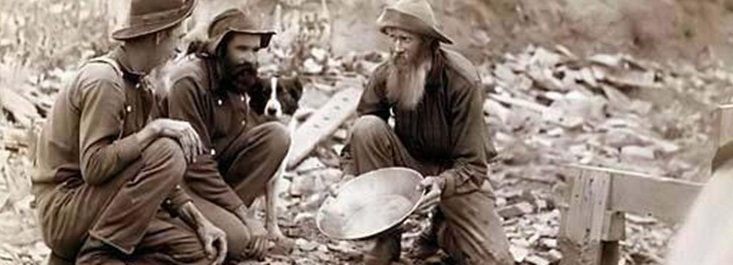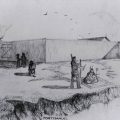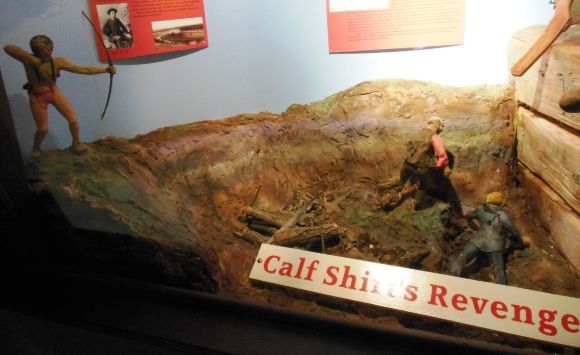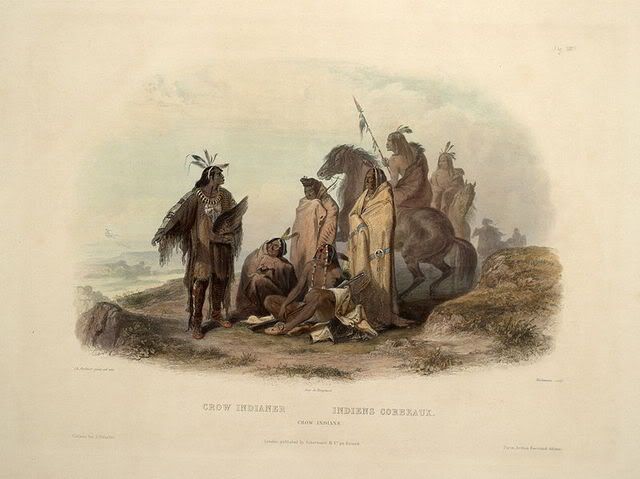
In 1864, gold was discovered in Montana. Ignoring a treaty, the gold seekers invaded the Blackfoot country north of the Missouri River. The illegal invasion upset the Blackfoot, and the American government, instead of stopping the prospectors, attempted to transfer this mineral wealth from the Indians to non-Indians. The illegal squatters had little respect for Indian culture, land, or lives.
In 1868, representatives of the American government met with representatives from the Blackfeet Confederacy (South Piegan, North Peigan, Blood, and Siksika), Gros Ventre, and River Crow at Fort Benton, Montana. The reason for the new treaty, according the Montana Post, was that the current treaty needed be changed
“because the gold discoveries created valuable assets which should be taken from the Indians”
While the Montana press lauded the treaty as being advantageous to the Americans, transferring wealth from Indians to non-Indians, the Indians were not particularly happy with the terms which they had been forced to accept. While the treaties called for a series of land sessions, they were not ratified by the Senate. The annuities promised to the Indians were never delivered and the Indians simply assumed that once again the American government had lied to them.
After the treaty council had left Fort Benton, Blackfoot chief Little Dog rode into town to warn people that Mountain Chief and his band of North Peigan, together with some Kainai (Blood) and Siksika had been celebrating with some whiskey. They were threatening to attack both Fort Benton and the Gros Ventre (Atsina) who were camped nearby. Mountain Chief’s brother had been murdered in Fort Benton and his body stuffed into a well. As with all Indian murders, the government had refused to investigate or attempt to bring the killers, who were well-known in the community, to justice. As a result, Mountain Chief disliked Americans, particularly those living in Fort Benton.
Little Dog told the residents of Fort Benton that he would help in the defense of the town. Little Dog was well-known as a friend of the Americans.
About 500 warriors rode across the bottom by the fort and town and then circled the nearby Gros Ventre camp. Insults and challenges were exchanged as they rode around the camp. There was only verbal abuse: no shots were fired.
The war party then turned and rode into the town, yelling and firing their guns into the air. On Front Street-the main street of Fort Benton which parallels the Missouri River-the war party stopped and made a half-circle. Some of the chiefs rode forward, making threats and calling names. However, the possibility that Little Dog and his warriors, who were watching from a nearby hill, might enter the fray was a deterrent to further action.
Later that afternoon, the war party returned. This time they had tied calico cloth to their horses’ tails. They rode full speed, calico trailing colorfully out behind, through the bottom and into the town. Once again they were yelling and firing their rifles into the air. The non-Indian population of Fort Benton scattered, many seeking shelter in their cellars. The Indians continued to terrorize the town through the night. This event was called “treeing the town.” It was neither the first time nor the last time that Indians treed a Montana town.




Leave a Reply